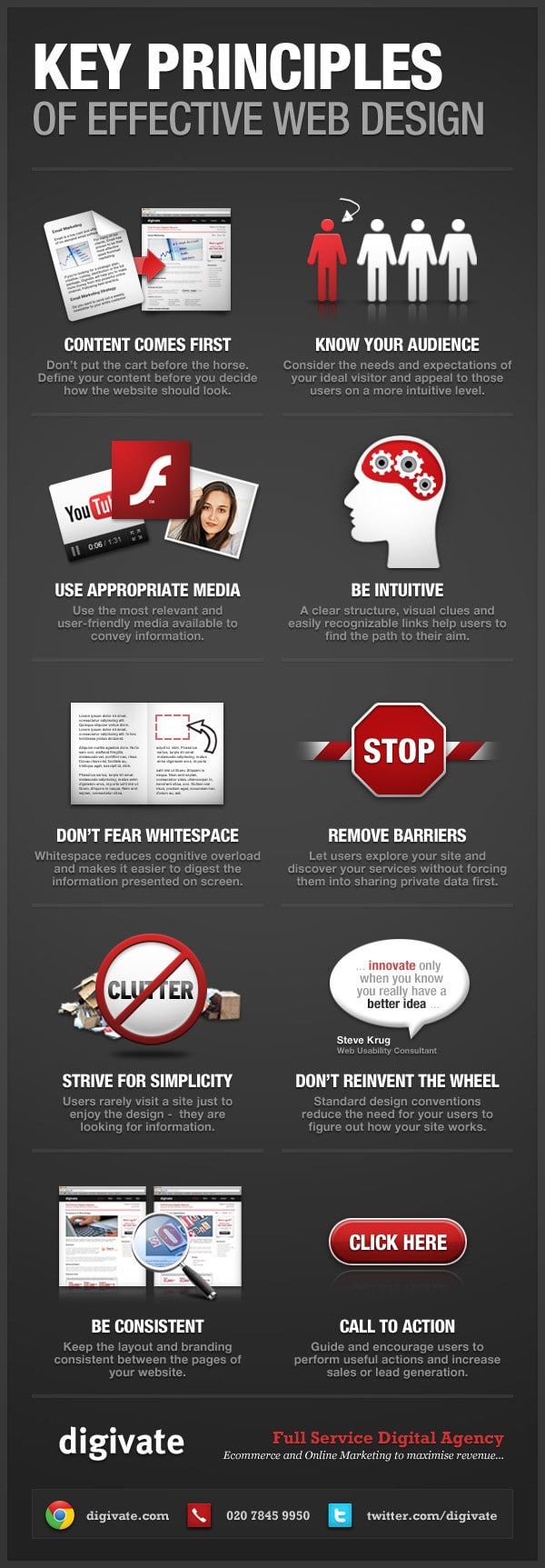The whole purpose of having a website online is for people to check it out. There are unlimited ways that you can design a website and neither of them are either wrong or right. The design simply depends on the purpose of the website itself. However, it would be ultimately stupid if we didn’t plan, optimize or researched what it is that we actually need in order to drive traffic. The key principles might not be obvious to everyone so let’s have a look at them.
What I mean by key principles is pretty much how you present your website and its content. The mistake most people make is to implement all kinds of cool, which by cluttering features on their website only confuses their visitors. I have done it myself here on Bit Rebels, but as all web designers say, you have to try it to know if it works or not.
In theory, according to digivate, there are 10 key principles that should be implemented into every web design in order for them to be as effective as possible. They have compiled a really simple yet useful infographic called Key Principles Of Effective Web Design, and if implemented it could be a huge boost to your website’s traffic.
As you may well know, design is important. However, simplicity always wins. People don’t like to think when they browse they just want to find cool stuff. That’s the honest truth and one that has made many websites quite popular.
Simplicity, space and intuitive design can be rolled into what I just said, but call to action is as important. Without a healthy dose of help from your visitors, you can’t expect your website to become popular through word of mouth or even drive up sales. You have to engage and reward your visitors in order for them to completely identify with your brand. I know it is easier said than done, but it has to be done. Have a look through these 10 key principles and make sure your website incorporates them. If implemented, you can expect great things in the future if your dedication to your website and brand is kept intact.

COMMENTS